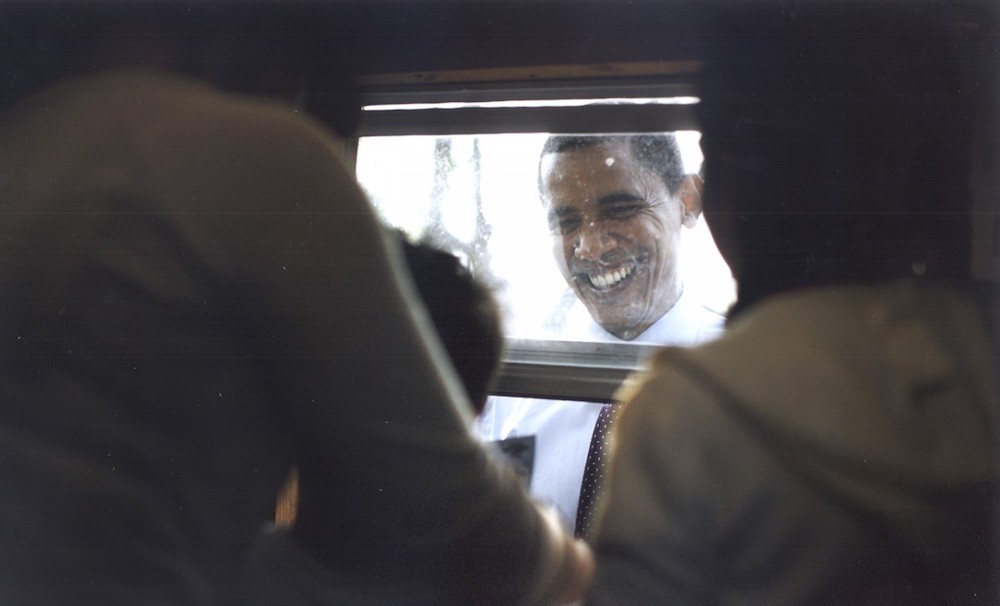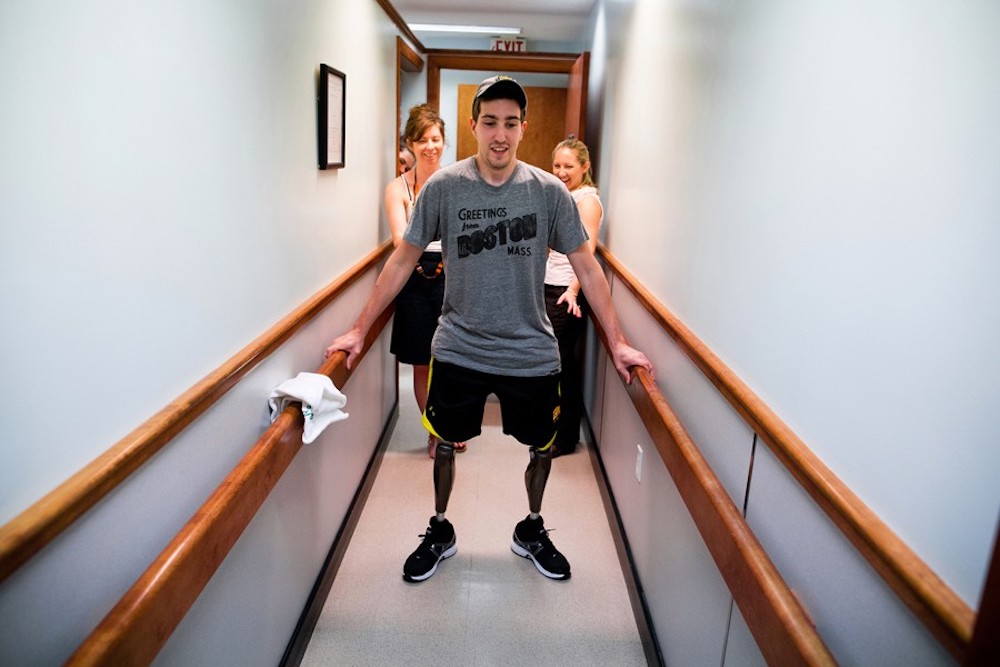Tributes have being paid to Michele McNally – who oversaw the winning of six Pulitzer Prizes for photography during 14 years as The New York Times’ director of photography – who has died, aged 66.
On 1 March one of her daughters, Caitlin McNally, announced that McNally had passed in a hospital in Yonkers, New York, due to complications of pneumonia.
McNally was named director of photography at The New York Times in 2004 by Bill Keller, the newspaper’s then executive editor.
In 2005 she was promoted to assistant managing editor, joining the top echelon of paper’s newsroom management team.

Senator Obama buying tickets for food and rides at the Sombrero Festival in Brownsville, Texas. Damon Winter won a Pulitzer Prize in 2009 for his coverage of the 2008 election campaign of Barack Obama. Image: Damon Winter/The New York Times
Pulitzer Prizes
McNally was the driving force behind winning The New York Times six Pulitzer Prizes for news and feature photography between 2004 and 2018.
Among the photographers who won Pulitzer Prizes during her tenure at The New York Times was Damon Winter, in 2009, for his coverage of Barack Obama’s presidential campaign.
In 2014, Josh Haner won a Pulitzer for his photo essay on a Boston Marathon bombing victim, Jeff Bauman, who lost most of both legs.
Also in 2014, Tyler Hicks won the Breaking News Photography Pulitzer for his compelling pictures that showed skill and bravery in documenting the unfolding terrorist attack at Westgate mall in Kenya.
In 2016, Mauricio Lima, Sergey Ponomarev, Tyler Hicks and Daniel Etter won a Pulitzer for their work documenting the struggles of international refugees.
McNally tributes
Dean Baquet, The New York Times’ current executive editor, said, ‘She was a transformational figure in photojournalism. She walked into newsrooms where photography had taken a back seat for too long and forced it into the fore.’
Jean-Francois Leroy, the founder and director of Visa pour l’Image (the world’s biggest festival of photojournalism), commented, ‘She was one of the people I respected the most in the world of photojournalism. With her, The New York Times became one of the greatest references in this profession. I am very sad. She is one of the great figures in this profession.’
John Moore – the renowned Getty Images photojournalist who won the 2005 Breaking News Pulitzer Prize – simply said, ‘Photojournalism lost a giant in the field, and a friend.’
Click on the video above to watch Michele McNally discussing winning photographs from the 2015 World Press Photo Awards, for which she was jury chair.
Retirement in 2018
When McNally retired in 2018, Dean Baquet and Joseph Kahn, the newspaper’s managing editor, said in a memo that during her tenure The New York Times had won more Pulitzer Prizes, George M. Polk Awards, Overseas Press Club honours, Emmys and other citations for photography, ‘than most news organisations have won for their entire reports.’
In 2008, McNally won the Jim Gordon ‘Editor of the Year Award’ for photojournalism from the National Press Photographers Association in the US.
In both 2015 and 2017 she received the Angus McDougall Visual Editing Award from the organisation Pictures of the Year International (POYi) at the Missouri School of Journalism.

Josh Haner won a Pulitzer Prize in 2014 for his coverage of Boston Marathon bomb victim Jeff Bauman. At a final fitting for his prosthetic legs, Jeff Bauman walked on his own for the first time since the day of the marathon. His girlfriend Erin, looked at him and said, ‘I love that you’re standing right now,’ before coming around to steady him and kiss him. Image: Josh Haner/The New York Times
Visually enhancing stories
Talented photographers and photo editors had preceded McNally at The New York Times, but the newspaper was better known for its writers and reporters.
From the start, McNally made her position clear, as Dean Baquet recalled, ‘Michele was blunt in saying the paper’s photography was not living up to its words.’
McNally was known to be a master at demonstrating how articles in the newspaper could be enhanced visually to attract more readers and how stories could be told through photographs alone.
The advent of The New York Times website also vastly expanded opportunities to complement articles with images and to present stories visually.
In 2017, McNally explained her approach to photojournalism, ‘You take an incredibly talented group of photographers, put them on the most important stories, and let it run as long as it needs to!’
Sygma agency
McNally was born Michele Angela Fiordelisi on 25 June 1955, in Brooklyn. After graduating from high school, she studied mass communications at Queens College from 1973 to 1975 and then took film courses at Brooklyn College.
She worked in the audio and video division of the Brooklyn Public Library and was hired as a sales representative by the Sygma Photo News agency in 1977.
Eliane Laffont, her first boss at the Sygma agency, said McNally was ‘a giant in a tiny body — very blunt, very fast, very street smart, a bundle of energy.’

Migrants arrive by a Turkish boat near the village of Skala, on the Greek island of Lesbos. The Turkish boat owner delivered some 150 people to the Greek coast and tried to escape back to Turkey; he was arrested in Turkish waters. Part of a series of images of struggling refugees that won the 2016 Pulitzer Prize for Breaking News Photography for Tyler Hicks, Daniel Etter, Sergey Ponomarev and Mauricio Lima. Image: Sergey Ponomarev/The New York Times
‘You are small, but you just don’t know it’
At about five feet tall, McNally was said to have been self-conscious about her height but was never deterred by it.
As she explained to colleagues during a retirement toast, ‘Once, during a disagreement, my old boss told me, “You are small, but you just don’t know it”.’
Pancho Bernasconi, vice president for global news at Getty Images, commented, ‘You never had to wonder where you or your work stood in her eyes. She loved great photography along with the brave and dedicated photographers who made those images.’
Career path
McNally was picture editor of Time Life’s Magazine Development Group in the early 1980s, then picture editor of Fortune magazine from 1986 until she joined The New York Times in 2004.
Meaghan Looram, who succeeded McNally as director of photography at The Times, said, ‘She proceeded to teach me everything I know about visual editing, about the art of making an inspired match between photographer and story, about coaching photographers and editors into discovering their own excellence, and about managing people with empathy and compassion.’
McNally was never a photographer herself and, in an online Q&A, told New York Times’ readers, ‘I knew I couldn’t capture what I felt on film, or pixels. I am a visual person. I can’t just tell you stuff, I have to show you.’
McNally is survived by her daughters Caitlin and Claire McNally, three grandchildren and her sister.
Related articles:
Photojournalism in the age of social media








